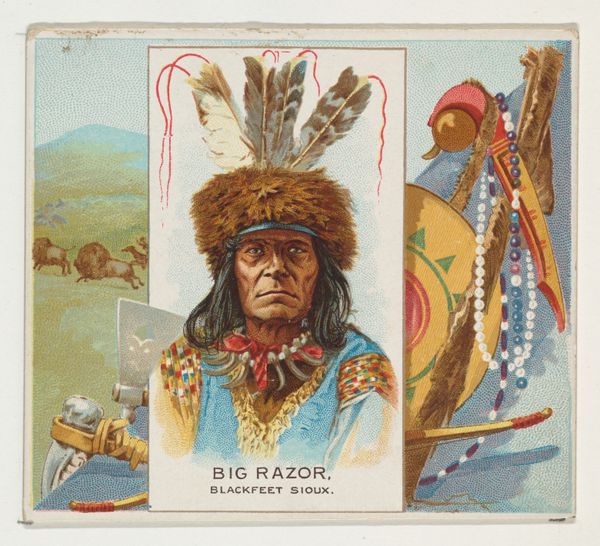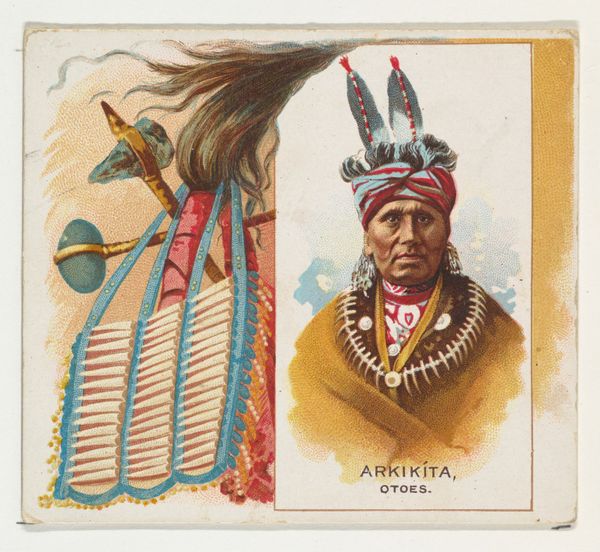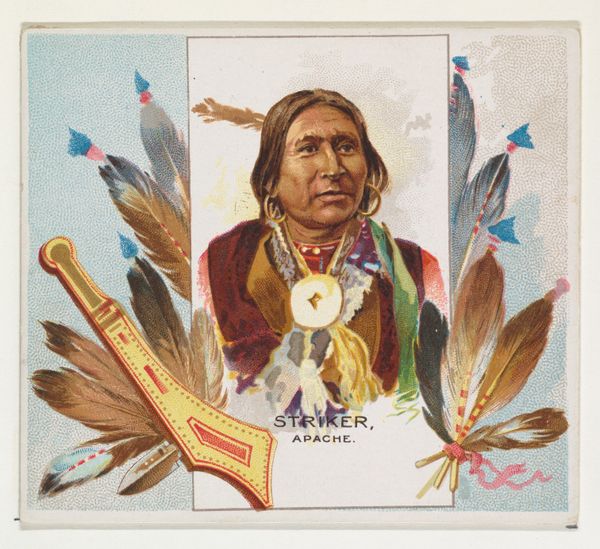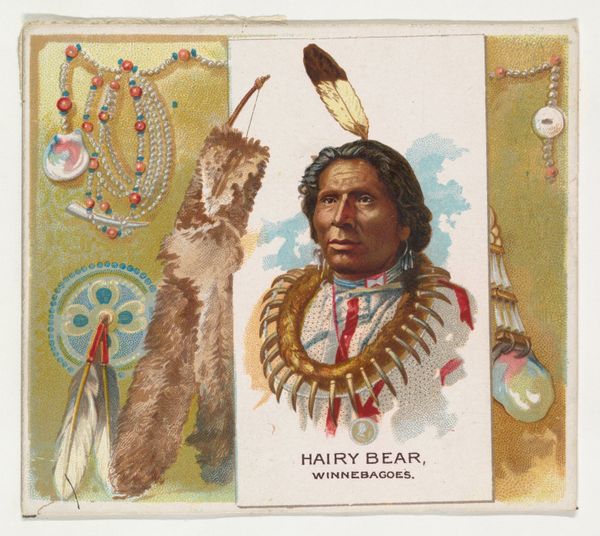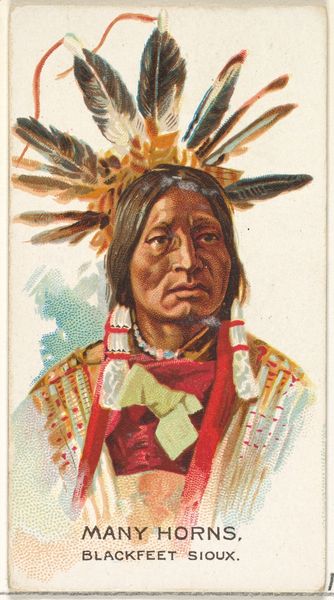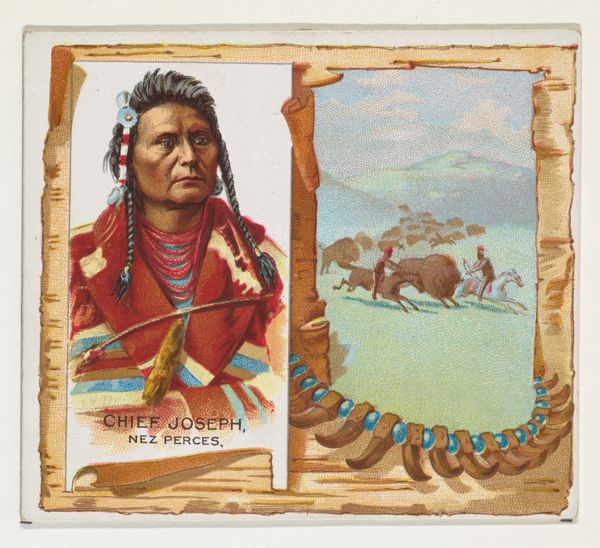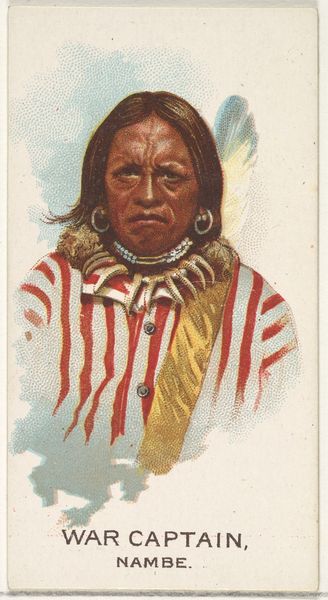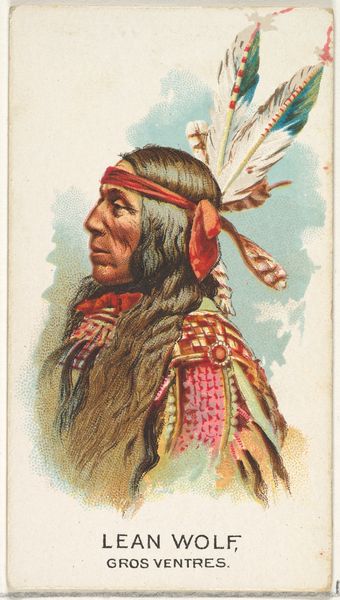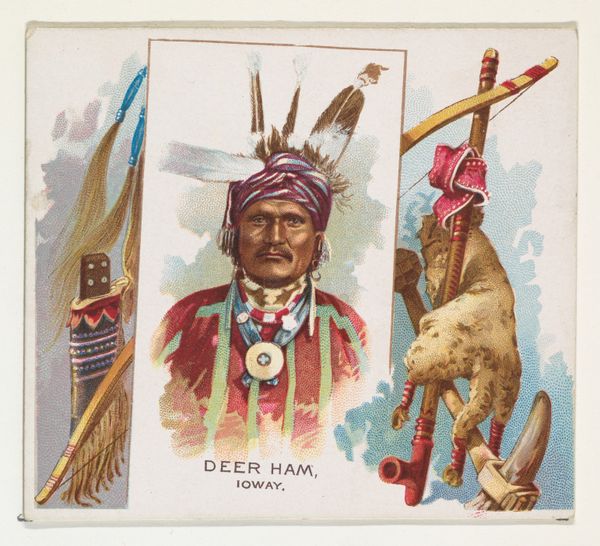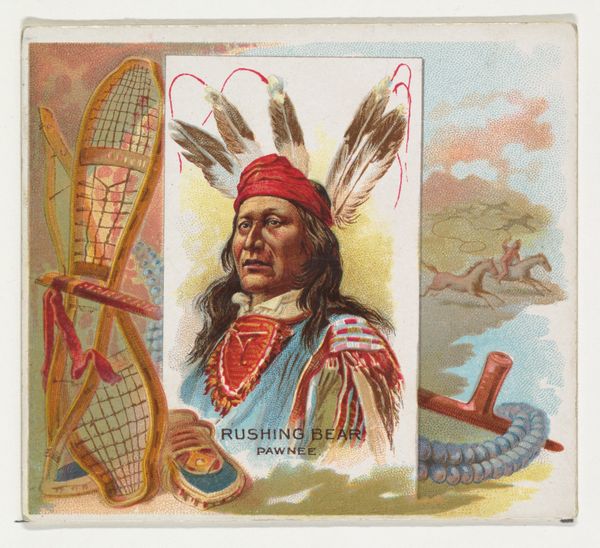
Many Horns, Blackfeet Sioux, from the American Indian Chiefs series (N36) for Allen & Ginter Cigarettes 1888
0:00
0:00
drawing, print, watercolor
#
portrait
#
drawing
#
water colours
# print
#
caricature
#
watercolor
#
naive art
Dimensions: Sheet: 2 7/8 x 3 1/4 in. (7.3 x 8.3 cm)
Copyright: Public Domain
Curator: This captivating print, a watercolor drawing really, is entitled "Many Horns, Blackfeet Sioux," created in 1888 by Allen & Ginter as part of their "American Indian Chiefs" series. Editor: My initial reaction is that of confronting a collage of disjointed realities; the composition is bifurcated, with meticulous portraiture battling against what looks like hastily rendered symbolic props. Curator: Precisely. This imagery reflects the complexities of representation and commodification. Cigarette cards like this functioned within a larger system of colonial power dynamics. While appearing to honor Indigenous leaders, they simultaneously participated in cultural appropriation and the erasure of Native narratives by turning them into commodities to be bought and sold alongside tobacco. The series presents an extremely stereotyped image of Native Americans that romanticizes but also exoticizes the figure of the chief. Editor: Semiotically speaking, we observe symbols placed against this man's image. What do you make of their arrangement and symbolic weight, these almost fetishistic accessories adorning the visual space surrounding Many Horns? Curator: They are loaded with meaning. The juxtaposition of weapons, bison, and decorative objects beside the central portrait underscores both the military prowess and cultural heritage ascribed to Many Horns and the Blackfeet Sioux nation. What's conspicuously missing, of course, is any sort of contextual depth. It strips these of authentic historical context by reducing cultural signifiers into exotic accessories divorced from any functional purpose other than their value as symbolic markers of "Indianness". Editor: I'm intrigued by how the artist handles color and line. Notice the stark realism used in Many Horn's portrait compared with the flatter, almost cartoonish rendering of the bison and landscape. This disparity creates visual discord that throws into sharp relief the artifice behind this enterprise. Curator: The print can be interpreted as a document reflecting a moment of intense cultural upheaval, as Native American tribes were struggling against displacement, cultural destruction, and assimilation. I feel its legacy lies in the uncomfortable questions it poses about the ethics of representation and the enduring power of visual media in perpetuating historical injustice. Editor: A fragmented, troubled composition. Viewing it has further solidified how critical careful looking is—attending to details like coloration and the handling of space. Curator: Absolutely, while analyzing the social, historical, and political contexts behind this art teaches us more about its cultural relevance.
Comments
No comments
Be the first to comment and join the conversation on the ultimate creative platform.
